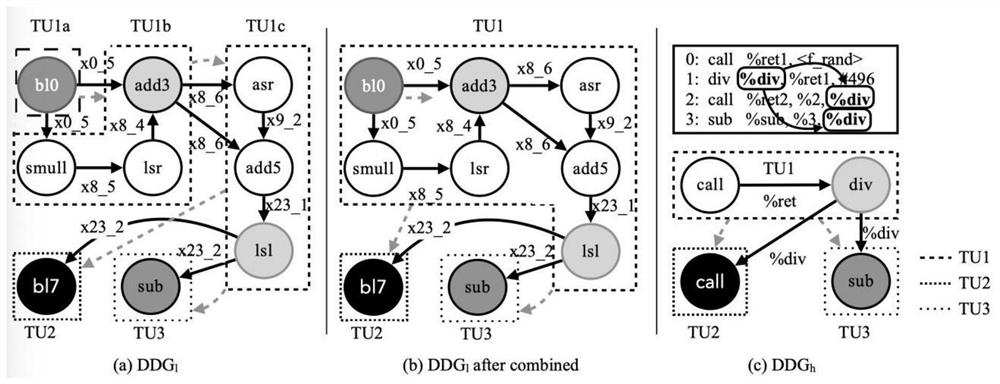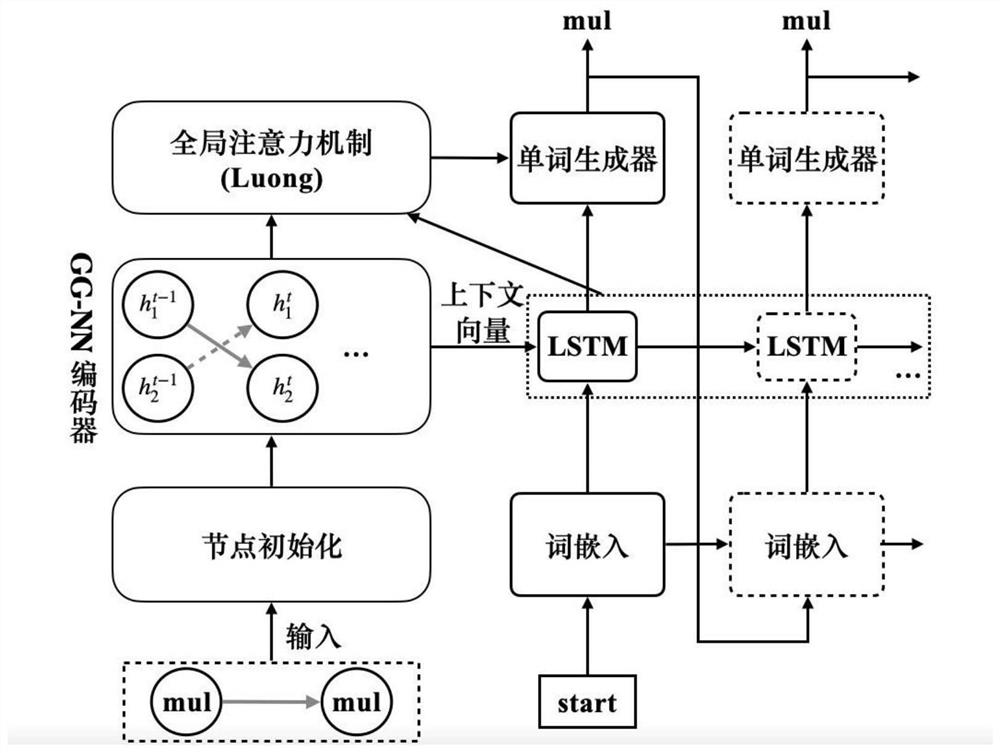Optimized code decompiling method and system based on deep learning
A deep learning and decompilation technology, applied in the fields of information security and software technology, can solve problems such as error-prone, rule conflict, time-consuming, etc., and achieve the effect of increasing readability and high accuracy
- Summary
- Abstract
- Description
- Claims
- Application Information
AI Technical Summary
Problems solved by technology
Method used
Image
Examples
Embodiment Construction
[0039] The present invention will be further described below through specific embodiments and accompanying drawings.
[0040] 1. The overall flow of the optimized code decompilation method based on deep learning of the present invention is as follows: figure 1 shown, including the following points;
[0041] 1.1. Data set construction: Obtain the low-level intermediate language LIR and high-level intermediate language HIR code pairs from LPL and HPL, and perform data dependency analysis to obtain the graph-structured LIR and the sequence-structured HIR.
[0042] 1.2. Deep model translation: Select a deep learning model suitable for code translation, use the constructed dataset to train the deep learning model, and learn the mapping rules between LIR and HIR. Using the trained deep learning model, the LIR of the LPL to be decompiled is translated into HIR.
[0043] 1.3. Generate HPL code: According to HIR, restore data flow, restore control structure, and generate HPL code of ...
PUM
 Login to View More
Login to View More Abstract
Description
Claims
Application Information
 Login to View More
Login to View More - R&D Engineer
- R&D Manager
- IP Professional
- Industry Leading Data Capabilities
- Powerful AI technology
- Patent DNA Extraction
Browse by: Latest US Patents, China's latest patents, Technical Efficacy Thesaurus, Application Domain, Technology Topic, Popular Technical Reports.
© 2024 PatSnap. All rights reserved.Legal|Privacy policy|Modern Slavery Act Transparency Statement|Sitemap|About US| Contact US: help@patsnap.com










